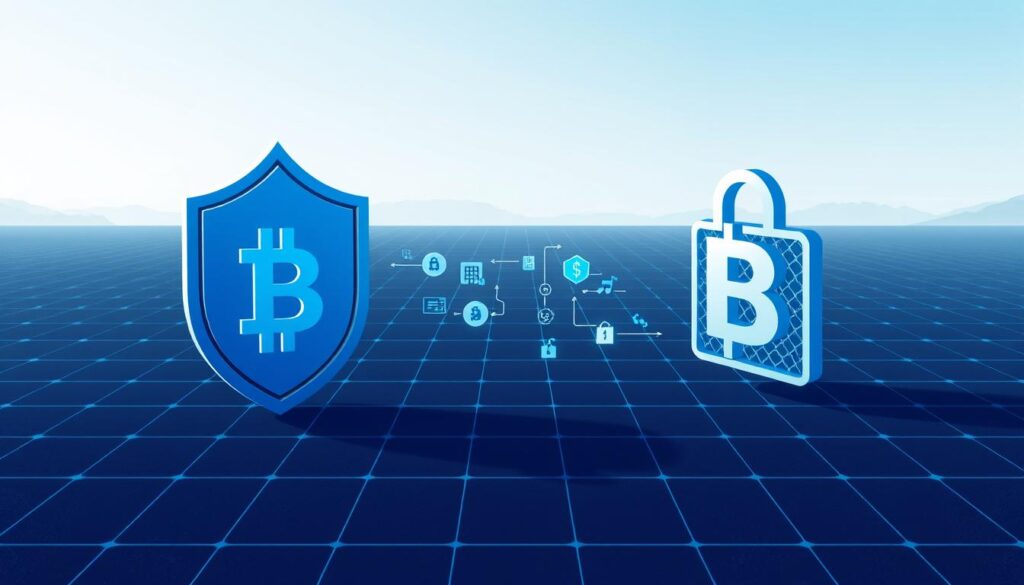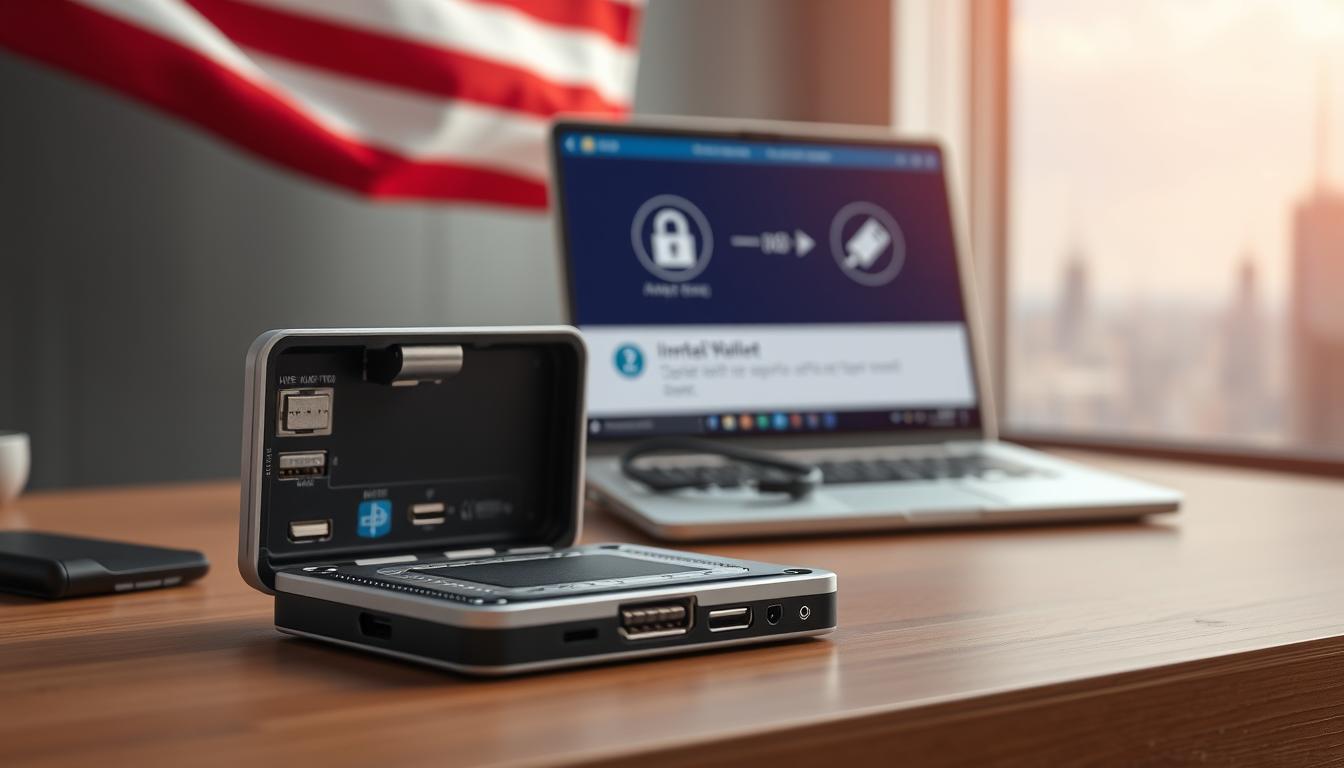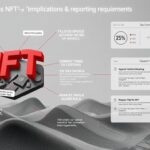Now Reading: Explore the Benefits of Token-Gated Content
- 01
Explore the Benefits of Token-Gated Content
Explore the Benefits of Token-Gated Content
Digital creators and brands are redefining how audiences access premium materials. Token gating uses blockchain technology to unlock special perks, events, or resources for verified holders. This method transforms ordinary interactions into personalized experiences, rewarding loyal supporters while boosting engagement.

Industries like gaming, education, and entertainment now use this strategy to build stronger communities. For example, musicians offer backstage passes to NFT holders, while online courses provide token-based certifications. These systems create exclusivity, making users feel valued and connected.
Platforms such as Discord and Ticketmaster have adopted token gating to manage access effectively. It’s not just about restricting materials—it’s about crafting unique opportunities that drive long-term loyalty. Creators also gain sustainable revenue streams by monetizing their work without relying on ads or subscriptions.
Key Takeaways
- Token gating builds exclusivity through blockchain verification
- Enables creators to monetize offerings while deepening audience relationships
- Used by major platforms like Discord for community management
- Balances security with user-friendly access controls
- Supports diverse applications across industries
Understanding Token-Gated Content
Blockchain innovation is reshaping how communities interact with digital resources. At its core, this approach uses cryptographic verification to grant access to premium features or events. Unlike traditional paywalls, it ties privileges directly to provable ownership of blockchain-based assets.
Defining the Concept
Token gating acts like a digital bouncer. It checks if users hold specific tokens in their crypto wallets before allowing entry. This system works across platforms, from private Discord servers to virtual concert tickets. Ownership verification happens instantly through smart contracts, ensuring only legitimate holders gain entry.

Historical Context and Growth in Web3
Early blockchain projects tested basic membership models using wallet addresses. As NFTs exploded in popularity, creators needed ways to reward supporters long-term. Web3 platforms expanded these systems to include:
- Exclusive merchandise drops for NFT collectors
- VIP event passes tied to digital wallets
- Educational materials unlocked through token verification
Today’s solutions support multiple blockchain networks, blending physical and digital experiences. This evolution helps creators build deeper connections while maintaining secure access controls.
The Technology Behind Token Gating
Behind every secure digital gateway lies a sophisticated blend of blockchain protocols. These systems use decentralized networks to authenticate users while maintaining transparency. At their core, they rely on two critical components: self-executing code and tokenized ownership models.

Smart Contracts and Blockchain Integration
Smart contracts act as automated gatekeepers. They check wallet balances against predefined rules—like requiring 3 ETH tokens or membership in an NFT collection. When users connect their wallets, these blockchain programs:
- Verify ownership through cryptographic signatures
- Scan public ledgers for required tokens
- Grant instant access without third-party approvals
This process eliminates manual checks while ensuring accuracy. Platforms can set dynamic conditions, such as time-limited access or tiered benefits based on token quantities.
Token Standards: Fungible vs. Non-Fungible
Blockchain uses distinct token types for different gating strategies:
- Fungible tokens (ERC-20): Grant access when users hold specific amounts—like 500 $DAO tokens for premium forums
- Non-fungible tokens (ERC-721): Unlock perks through unique digital assets, such as NFT-based concert tickets
Hybrid systems are emerging too. Some platforms combine both standards, requiring an NFT plus 100 utility tokens for VIP experiences.
How Token-Gated Content Empowers Exclusive Experiences
Exclusive access is becoming the gold standard for building passionate communities. Blockchain verification lets creators design experiences that reward true supporters while strengthening brand loyalty. This approach bridges digital innovation with real-world value.

Driving Community Engagement and Loyalty
Discord servers demonstrate this power best. Projects like Bored Ape Yacht Club use token checks to unlock private channels where members get early updates and direct founder access. This exclusivity makes users feel like insiders, boosting participation rates by 300% in some communities.
Ownership changes behavior. When people invest in tokens, they engage more deeply—sharing ideas, attending events, and promoting projects organically. This creates self-sustaining ecosystems where everyone benefits.
Online and Offline Applications
Virtual worlds like Decentraland host concerts only accessible through specific NFTs. Meanwhile, real-life gatherings like Deadfellaz’s 2022 NFT NYC party prove physical events thrive with token checks. Brands now blend both realms:
- Metaverse art galleries requiring land NFTs
- IRL meetups with wallet scans for entry
- Loyalty rewards programs offering tiered perks
This dual strategy increases token utility. Holders gain privileges across dimensions, making digital assets feel tangible. As more industries adopt these models, community bonds grow stronger through shared experiences that money can’t easily buy.
Implementing Token Gating: Use Cases and Platforms
Innovative platforms are making token verification accessible across industries. From music festivals to online communities, these tools simplify access management while prioritizing security. Let’s explore practical applications shaping digital and physical spaces.
Leading Solutions for Seamless Verification
Collab.Land dominates Discord integration with automated wallet checks. Its bot grants channel access instantly—no coding required. Artists like Snoop Dogg use similar systems to host fan-exclusive chats.
For real-world events, Tokenproof stands out. It lets users prove ownership without exposing wallets. Cold storage stays secure while attendees scan QR codes for entry—ideal for conferences or VIP parties.
Ticketmaster’s Flow blockchain integration bridges Web3 and mainstream audiences. Organizers now create token-based tickets through familiar interfaces. This platform removes crypto complexities, attracting non-technical users.
Beyond Basic Access: Advanced Applications
Educational use cases shine through Ledger Quest’s ApeCoin program. Holders unlocked tutorials and rewards, blending learning with ownership perks. Such models work for:
- Gaming communities offering early beta access
- Streaming services with tiered subscription levels
- E-commerce brands providing token-based discounts
No-code tools let small businesses deploy custom rules effortlessly. Imagine cafes requiring 10 $COFFEE tokens for monthly meetups—all managed through drag-and-drop dashboards.
Risk Management and Best Practices for Secure Access
Protecting user assets demands robust security measures and compliance awareness in blockchain ecosystems. While token ownership unlocks exclusive advantages, improper safeguards can expose wallets and communities to unnecessary risks. Strategic planning ensures systems remain both accessible and secure.
Ensuring Smart Contract Reliability and Wallet Security
Asset segregation tops the security checklist. Create separate wallet accounts for platform interactions, keeping valuable holdings in isolated vaults. This limits damage if one account gets compromised.
Smart contract audits prevent costly errors. Third-party experts review code for vulnerabilities before deployment. Platforms like OpenZeppelin offer standardized templates to reduce development risks.
Hardware wallets provide superior protection for long-term storage. Combine them with multi-signature approvals for high-value transactions. Regular software updates patch emerging threats targeting wallet services.
Regulatory, AML, and KYC Considerations
Compliance requirements vary across regions. Platforms handling large transactions often implement KYC checks to verify user identities. This helps meet anti-money laundering rules while building trust.
Monitor wallet activity for suspicious patterns. Set alerts for unusual transfers and educate communities about phishing scams. Clear guidelines help users avoid malicious transaction requests.
Operators should conduct penetration testing and maintain incident response plans. Rate limiting prevents brute-force attacks, ensuring services remain available during peak demand. Security isn’t a one-time process—it’s an ongoing commitment.
Integrating Token-Gated Content into Your Strategy
Building a loyal audience requires more than generic perks—it demands strategic value delivery. By aligning blockchain verification with community desires, creators transform casual users into invested stakeholders. This approach turns digital assets into keys for personalized experiences that drive measurable results.
Enhancing User Engagement and Monetization
Start by identifying high-value offerings your audience craves. Exclusive workshops, limited merch drops, or VIP Q&A sessions work well. Structure access tiers based on token ownership—for example, basic perks for 1 NFT holder status and premium benefits for 5+.
User engagement spikes when rewards match effort. Projects using tiered systems see 40% longer session times and 2x more social shares. Members with skin in the game actively participate in polls, content creation, and referral programs.
Monetization flourishes through layered opportunities:
- Early product releases for top-tier token holders
- Membership subscriptions with token-based discounts
- Commissioned artwork unlocked through community votes
Time your rollout carefully. Launch token checks after establishing core value—like a musician introducing gated fan clubs post-album success. Track retention rates and revenue per user to refine offerings quarterly.
Creators using these methods report 150% higher lifetime value from engaged members. The key? Balance exclusivity with accessibility, ensuring every tier feels rewarding.
Wrapping Up the Ultimate Guide on Token-Gated Content
Token verification is revolutionizing how communities engage with premium offerings. By tying access to provable ownership, creators build trust while rewarding supporters with meaningful perks. This approach turns digital assets into keys for real-world value, blending security with creativity.
Holders gain more than exclusivity—they join ecosystems where participation unlocks growth. From private Discord channels to VIP events, experiences feel personal and earned. Brands benefit too, using gating to foster loyalty without sacrificing scalability. Platforms like Collab.Land simplify setup, letting anyone launch token-based systems in minutes.
Looking ahead, expect deeper integration between physical and digital spaces. Imagine concerts where NFT tickets grant backstage meetups or rewards programs that evolve with member activity. As industries adopt these models, token utility will drive innovation, making every interaction count.
Start small, prioritize user value, and watch communities thrive. The future of engagement is here—and it’s owned by the holders.
FAQ
How does blockchain enable token-gated access?
Blockchain uses decentralized ledgers and smart contracts to verify ownership of digital assets like NFTs. This allows platforms to grant entry only to verified holders, ensuring secure and transparent access control.
Can token gating work for physical events?
Yes. Brands like Ticketmaster and Coachella have used NFTs to offer VIP passes or early ticket sales. Attendees prove ownership via crypto wallets, merging digital ownership with real-world perks.
What risks come with token-gated systems?
Vulnerabilities in smart contracts or compromised wallets can lead to unauthorized access. Platforms must audit code, enforce multi-factor authentication, and follow AML/KYC rules to minimize risks.
Which industries benefit most from token gating?
Music, gaming, and art communities thrive with this model. Platforms like Discord and Shopify let creators offer exclusive merch, early releases, or private channels to loyal supporters holding specific tokens.
How do fungible tokens differ from NFTs in gating?
Fungible tokens (like ERC-20) grant access tiers based on quantity held, while NFTs (ERC-721) provide unique benefits tied to individual assets. Both create tailored experiences for holders.
Can small creators use token gating effectively?
Absolutely. Tools like Collab.Land or Unlock Protocol help artists monetize fanbases by offering subscriber-only content, behind-the-scenes updates, or limited-edition drops to token holders.
Does token gating require coding skills?
Not always. No-code platforms like MintGate or Guild simplify setup. Users connect wallets, set rules, and share gated links—ideal for creators focusing on community-building over tech details.

















